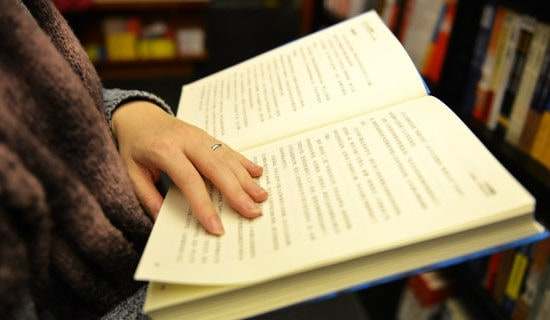四級(jí)閱讀理解練習(xí)及答案
When blood is sent to the lungs by the heart, it has come back from the cells in the rest of the body. So the blood that goes into the wall of an air sac (Jl) contains much dissolved carbon dioxide but very little oxygen. At the same time, the air that goes into the air sac contains much oxygen but very little carbon dioxide.

You have learned that dissolved materials always diffuse (擴(kuò)散) from where there is more of them to where there is less. Oxygen from the air dissolves in the moisture on the lining of the air sac and diffuses through the lining into the blood. Meanwhile, carbon dioxide diffuses from the blood into the air sac. The blood then flows from the lungs back to the heart, which sends it out to all other parts of the body.
Soon after air goes into an air sac, it gives up some of its oxygen and takes in some carbon dioxide from the blood. To keep diffusion going as it should, this carbon dioxide must be gotten rid of. Breathing, which is caused by movements of the chest, forces the used air out of the air sacs in your lungs and brings in fresh air. The breathing muscles are controlled automatically so that you breathe at the proper rate to keep your air sacs supplied with fresh air.
Ordinarily, you breathe about twenty-two times a minute. Of course, you breathe faster when you are exercising and slower when you are resting. Fresh air is brought into your lungs when you breathe in, or inhale, while used air is forced out of your lungs when you breathe out, or exhale.
1. In the respiratory process, only one of the following actions takes place: it is_______.
A. the diffusion of blood through capillary walls into air sacs
B. the diffusion of carbon dioxide through capillary and air sac walls into the blood
C. the diffusion of oxygen through the air sac and capillary walls into the blood
D. the exchange of nitrogen within air sacs
2. The number of times per minute that you breathe is_______.
A. independent of your rate of exercise
B. fixed at twenty-two times per minute
C. influenced by your age and sex
D. controlled automatically by an unspecified body mechanism
3. The process by which carbon dioxide and oxygen are transferred does not depend on _________.
A. the presence of nitrogen in the blood
B. breathing muscles
C. the flow of blood
D. the moisture in the air sac linings
4. The author's style in this passage can best be described as---------.
A informal and matter of fact
B. impersonal
C. personal P- matter of fact and formal
5. Which of the following words can replace the word "exhale"?
A. Breathe out.
B. Breathe in.
C. Diffuse.
D. Exchange.
參考答案:
1. C 2. D 3. A 4. A 5. A
【四級(jí)閱讀理解練習(xí)及答案】相關(guān)文章:
勞動(dòng)閱讀理解練習(xí)答案05-27
短文閱讀理解練習(xí)及答案07-09
路上閱讀理解練習(xí)與答案03-19
母親閱讀理解練習(xí)答案04-19
語(yǔ)文閱讀理解的練習(xí)及答案11-05
木屐閱讀理解練習(xí)答案12-06
格列佛閱讀理解練習(xí)及答案12-04
燕使閱讀理解練習(xí)及答案12-06
閱讀理解練習(xí)附答案12-09